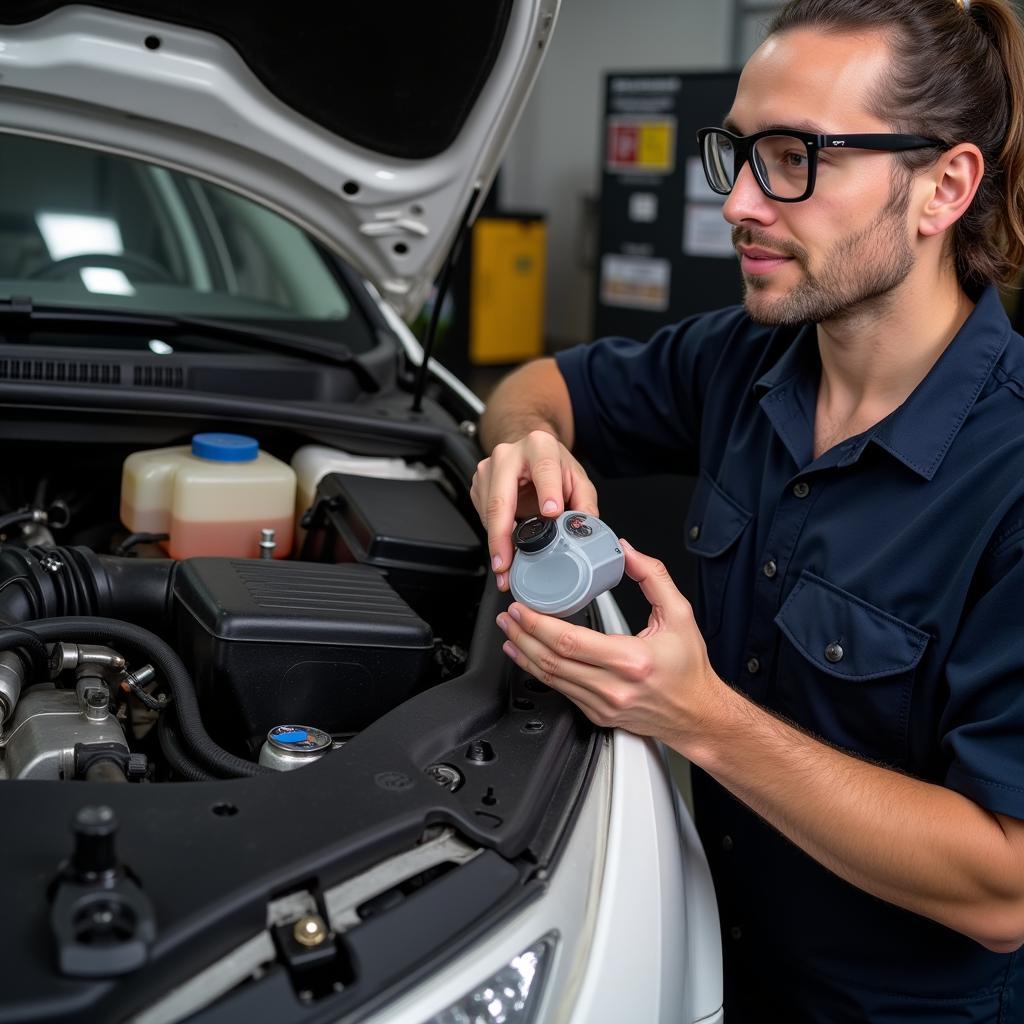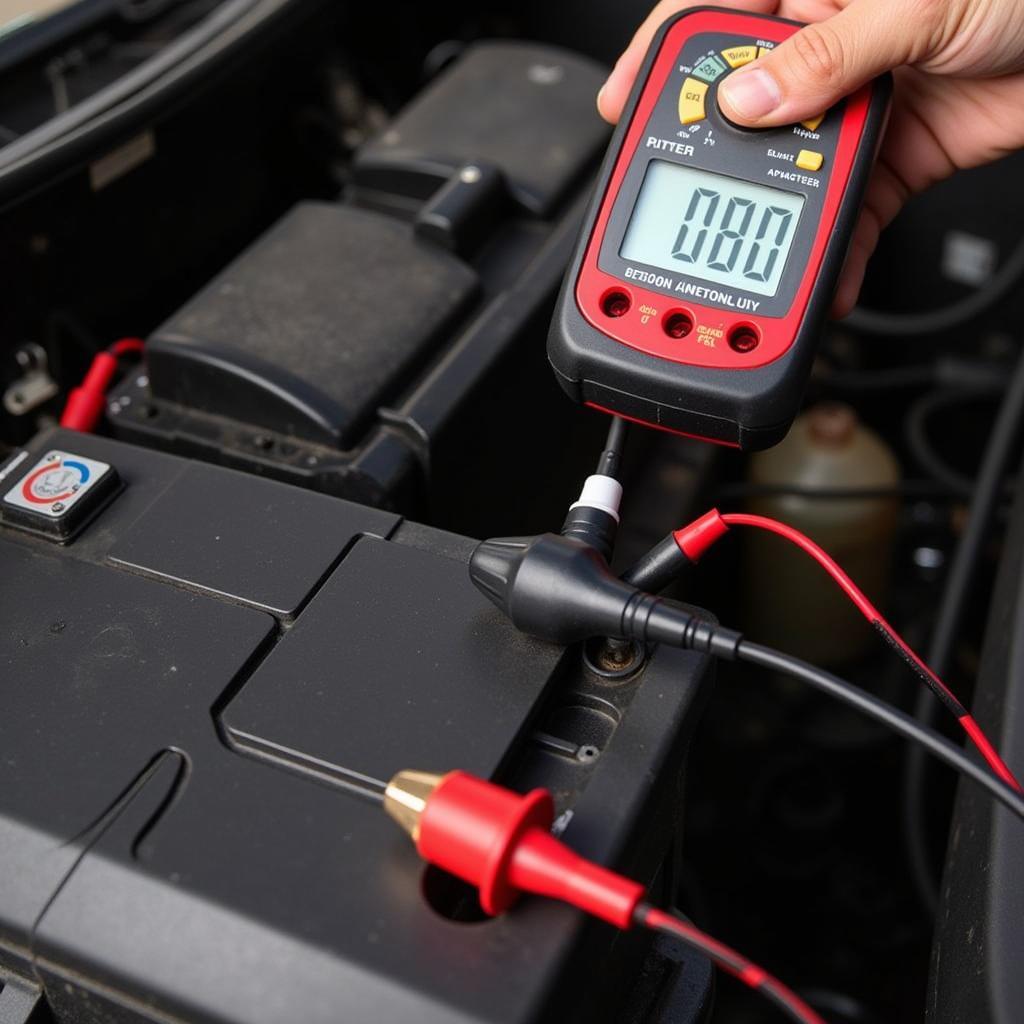The anti-lock brake system (ABS) is a vital safety feature on modern vehicles, helping prevent wheel lockup during braking. However, when the ABS warning light in your instrument cluster illuminates, it can be a cause for concern. This article will delve into the reasons why this light might turn on, the potential consequences of ignoring it, and the steps you can take to troubleshoot and resolve the issue.
What Does the ABS Warning Light Mean?
The ABS warning light indicates that there is a problem with your car’s anti-lock brake system. It could be a minor issue like a faulty sensor or a more serious problem like a malfunctioning hydraulic unit. Regardless of the cause, the warning light should never be ignored.
Why Does the ABS Warning Light Come On?
There are numerous reasons why your ABS warning light may illuminate. Some of the most common culprits include:
1. Faulty ABS Sensors
ABS sensors are crucial components that monitor the speed of each wheel. If a sensor becomes damaged or dirty, it may send inaccurate readings to the ABS module, triggering the warning light.
2. ABS Module Malfunction
The ABS module is the brain of the anti-lock braking system, controlling its operation. If the module malfunctions, it can lead to the warning light coming on, potentially affecting the ABS’s ability to function properly.
3. Low Brake Fluid Level
Low brake fluid can cause the ABS warning light to turn on because it affects the pressure in the brake system, which the ABS module relies on to function correctly.
4. Electrical Issues
Electrical problems in the ABS system, such as a blown fuse, short circuit, or damaged wiring, can also trigger the warning light.
5. Wheel Speed Sensor Failure
Wheel speed sensors are an integral part of the ABS system, and their failure can lead to the warning light illuminating. These sensors are often located near the wheel hub.
6. Damaged ABS Components
Damaged components in the ABS system, such as the hydraulic unit, pump, or control unit, can also cause the warning light to come on.
What Happens If You Ignore the ABS Warning Light?
Ignoring the ABS warning light is never a good idea. While your brakes may still function, the ABS system may not be operational, potentially leading to the following:
- Loss of Vehicle Control: If your wheels lock up during hard braking, you could lose control of the vehicle, increasing the risk of an accident.
- Increased Stopping Distance: Without ABS, your vehicle may take longer to stop, potentially leading to collisions.
- Brake System Damage: A faulty ABS system can put undue stress on other brake system components, leading to premature wear or failure.
- Safety Risk: Driving with a malfunctioning ABS system poses a significant safety hazard to yourself and others on the road.
How to Troubleshoot and Fix an ABS Warning Light
If your ABS warning light illuminates, it is essential to get the problem diagnosed and repaired as soon as possible. Here’s a step-by-step guide to troubleshooting:
-
Check Brake Fluid Level: First, check the brake fluid level in the reservoir. If it’s low, add fluid to the appropriate level. If the level is low, it’s possible there’s a leak in the system.
-
Scan for Diagnostic Trouble Codes (DTCs): A qualified mechanic can scan your car’s computer system for DTCs related to the ABS system. These codes will provide valuable information about the specific fault.
-
Inspect ABS Sensors: Inspect the ABS sensors for signs of damage, corrosion, or dirt. Clean them with a wire brush if necessary.
-
Verify ABS System Electrical Components: Check the wiring harness, fuses, and relays related to the ABS system for any defects or issues.
-
Inspect ABS Components: In some cases, a visual inspection of the ABS hydraulic unit, pump, or control unit might reveal damage or leaks.
Expert Insights
“When the ABS warning light turns on, it’s crucial to address it promptly,” says Mark Thompson, a certified automotive technician with over 20 years of experience. “Ignoring it can lead to serious safety concerns, so it’s best to get the problem diagnosed and repaired by a qualified mechanic.”
“If you’re comfortable with basic auto repairs, you can try some of the troubleshooting steps mentioned,” adds Sarah Williams**, a freelance automotive writer. “However, if the problem persists or you’re unsure how to proceed, it’s always best to consult a professional.”
Conclusion
The ABS warning light should never be ignored. It signals a problem with your vehicle’s anti-lock brake system, which can potentially impact your safety and increase the risk of accidents. By taking the necessary steps to troubleshoot and resolve the issue promptly, you can ensure your vehicle’s braking system is functioning optimally and safely. Remember, if you’re unsure about any aspect of the repair process, consulting a qualified mechanic is always the best course of action.
FAQ
Q: Can I still drive with the ABS warning light on?
A: While your brakes may still work, the ABS system may be compromised. It’s recommended to drive cautiously and avoid hard braking until you get the problem diagnosed and repaired.
Q: How much does it cost to fix an ABS warning light?
A: The cost of repairing an ABS warning light can vary depending on the underlying issue and the labor costs in your area.
Q: How often should I have my ABS system inspected?
A: It’s a good practice to have your ABS system inspected regularly as part of your routine maintenance. The frequency of inspections may vary depending on your vehicle’s model and manufacturer recommendations.
Q: Can I reset the ABS warning light myself?
A: In some cases, you might be able to reset the warning light by disconnecting the battery for a few minutes. However, this doesn’t address the underlying issue and the light may reappear.
Q: Is it safe to drive with an ABS warning light on in snowy or icy conditions?
A: Driving with an ABS warning light on in snowy or icy conditions is particularly dangerous. Without the ABS system’s assistance, it’s easier to lose control of your vehicle on slippery surfaces.


